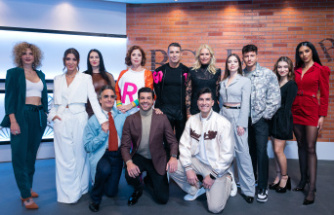In the middle of the selfies and the on-screen tweets to President Trump and a thousand and one other whiz-bang technological tools to make the Oscars seem relevant to an audience with an ever-shortening attention span, the Academy Awards were betrayed this year by the simplest item you can imagine.
Yes, a piece of paper crashed the Oscars.
Not just any piece of paper, mind you. An envelope. Or to put it more precisely: The Envelope, that most ancient of Oscar rituals, a piece of physical media, printed, lacquered, matted, die-cut, hand-folded and, in the immortal words of Stevie Wonder, signed, sealed and delivered by the trusted partners of accounting firm PricewaterhouseCoopers.
Only this year, one of those partners handed the wrong envelope to presenter Warren Beatty. Baffled by its contents — the card contained the winner of the lead actress Oscar, not best picture — Beatty handed the envelope to co-presenter Faye Dunaway, who erroneously proclaimed “La La Land” the victor.
That envelope then ended up in the hands of “La La Land” producer Jordan Horowitz, who told me Monday that he didn’t bother looking at it or the card — because why would he? He simply held onto it because, in recent years, since the academy upgraded to fancy-schmancy stationery, that envelope has become as cherished a keepsake as the Oscar itself.
As well it should be. Last year’s Oscar envelopes, designed by Marc Friedland Couture Communications, required 110 man-hours (Person-hours? Can’t women construct these things too?) to create. That’s 110 hours … for one envelope, each costing about $200.
I’m not sure how that compares to this year’s set of stationery, which was made by a different company, perhaps the one George Costanza bought his wedding invitations from. There are reports that the 2017 Oscar envelope, sporting a lower contrast gold printing on a red background, making it harder to read, may have contributed to the biggest fiasco in the history of the Academy Awards.
When the correct envelope was finally produced, Horowitz held its contents up for all to see: “Moonlight.” Adele Romanski, Dede Gardner and Jeremy Kleiner, producers. Best Picture.” (The point size for “Best Picture,” by the way, was annoyingly small.)
The ritual of the Oscar envelope, paraded down the red carpet in locked briefcases like Moses returning from the mountain, stone tablets in hand, dates to 1940. The year before, back in the day when the motion picture academy gave the press a list of winners beforehand, the Los Angeles Times leaked the winners prior to the ceremony. (You can’t trust the media!)
The winners were never much of a secret anyway, but from that point forward, the names were sealed in stationery, giving birth to the phrase “The envelope, please” and, later, split-screen cams designed to show us the victors’ joy and, sometimes, a nominee’s (there are no losers here) grumpiness. (We’re looking at you, Bill Murray.)
Other awards shows encase their winners’ names in paper too, but those envelopes have never captured the public’s fancy in the same way as the Oscars. That might be because the Academy Awards have always put its envelope-keepers, those pesky PricewaterhouseCoopers partners, in the spotlight, marching them down the red carpet and giving them a shout-out during the show. (Interestingly enough, this was the rare year when we didn’t see them during the telecast.)
Two years ago, Cate Blanchett spied PricewaterhouseCoopers partner Brian Cullinan and his locked briefcase on the red carpet and engaged him in a spirited tug-of-war over its contents. (This from an actress who was the safest bet that year to win an Oscar.)
Cullinan, a solid professional and likable guy, is apparently the one who handed Beatty the wrong envelope this year — meaning he might not be back at the Oscars in 2018.
But you can bet the envelopes will.
See the most-read stories this hour »
Watch a time-lapse of the 89th Academy Awards red carpet in two minutes.
Watch a time-lapse of the 89th Academy Awards red carpet in two minutes.
Watch a time-lapse of the 89th Academy Awards red carpet in two minutes.
Watch a time-lapse of the 89th Academy Awards red carpet in two minutes.
A time-lapse video of the Oscars red carpet.
A time-lapse video of the Oscars red carpet.
"Moonlight" won the best picture Oscar after a botched announcement through the ceremony into chaos.
"Moonlight" won the best picture Oscar after a botched announcement through the ceremony into chaos.
Staff writer Tre'vell Anderson asks 2017 Academy Awards ceremony attendees to discuss the significance of the Oscars.
Staff writer Tre'vell Anderson asks 2017 Academy Awards ceremony attendees to discuss the significance of the Oscars.
WATCH: Barry Jenkins, writer and director of "Moonlight," on the red carpet at the 2017 Academy Awards. "Everyone looks to the filmmaking community to reflect the world we live in," he said. And after the Oscars? "I'm going to Mexico," he said. "I'm going to the Yucatan."
WATCH: Barry Jenkins, writer and director of "Moonlight," on the red carpet at the 2017 Academy Awards. "Everyone looks to the filmmaking community to reflect the world we live in," he said. And after the Oscars? "I'm going to Mexico," he said. "I'm going to the Yucatan."
glenn.whipp@latimes.com
Twitter: @glennwhipp
Our editors found this article on this site using Google and regenerated it for our readers.












